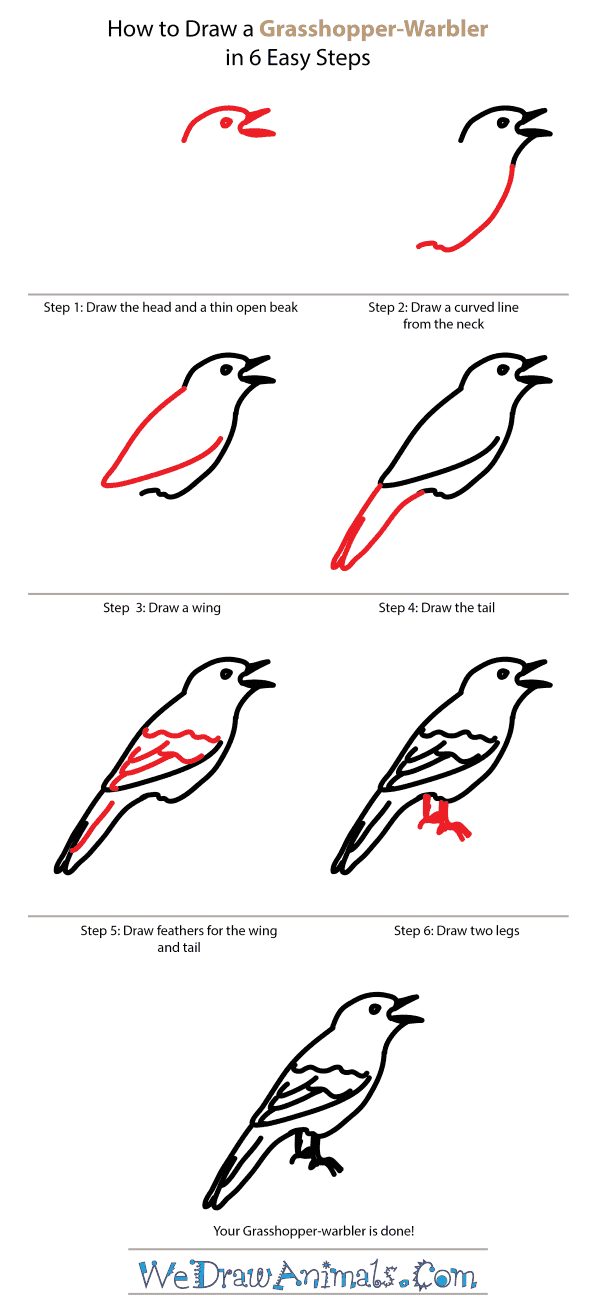In this quick tutorial you'll learn how to draw a Grasshopper Warbler in 6 easy steps - great for kids and novice artists.
The images above represent how your finished drawing is going to look and the steps involved.
Below are the individual steps - you can click on each one for a High Resolution printable PDF version.
At the bottom you can read some interesting facts about the Grasshopper Warbler.
Make sure you also check out any of the hundreds of drawing tutorials grouped by category.
How to Draw a Grasshopper Warbler - Step-by-Step Tutorial
Step 1: Draw the head, eye, and a thin, open beak. (Make it look like its singing!)
Step 2: From the base of the neck, draw a curved line to create the body
Step 3: Draw a wing toward the top of the body
Step 4: Draw the tail, connecting it from the wing to the bottom of its body
Step 5: Add in feathering lines for the wings and tail
Step 6: Draw two legs underneath the end of the wing
Interesting Facts about the Grasshopper-Warbler
The grasshopper-warbler is a small brown-colored bird that has a call similar to that of the grasshopper. This rather common bird grows up to about five inches in length and occurs in short vegetation that is near sources of water. The males and the females of this species look pretty much identical, which is a common theme amongst all species of warblers, but younger chicks will appear more bright yellow in color, rather than white and brown as they appear as adults. They are insect eaters, a trait known as being insectivorous. The grasshopper-warbler is incredibly common throughout Europe and parts of Asia and is usually found in rough, short grasses and shrubs.
Did you know?
- This bird can call for up to several minutes at length, without pausing much for oxygen.
- This call can be heard at any time, day or night, and is almost constant throughout the spring.
- During the winter, the grasshopper-warbler migrates to parts of Africa and Sri Lanka.
- It is a very shy bird and rarely ever seen, but you can tell when one is near because of its call.
- Because of their secretive nature, there is not much knowledge about these animals during their mating season.
This bird does not fly very often, preferring to run across the ground in its preferred habitats. Whenever this warbler does indeed fly, it is usually to dive back to safety away from predators. They are a clever bird, known to fake being injured in order to deceive anything trying to prey upon them. They eat a large variety of insects, and are considered vulnerable to endangerment.







